Maniac
- Base model: IBM Aptiva 330, Model 2144-24P, c.1994
- Processor: Intel 486SX2, 50 MHz
- Memory: 64 MB - the maximum allowed by the motherboard
- Video: Cirrus Logic GD-54xx (onboard) capable of 640x480 at high-color
- Audio: Compaq ESS Audiodrive ES1868F (Sound Blaster compatible), Roland MPU-401
- Storage: 3 GB Quantum Fireball SE3.2A, double-speed CD-ROM drive
- Networking: 3com Etherlink III
- Peripherals: Presently doesn't have a GamePort
- Operating system: MS-DOS 6.22, Windows 3.11
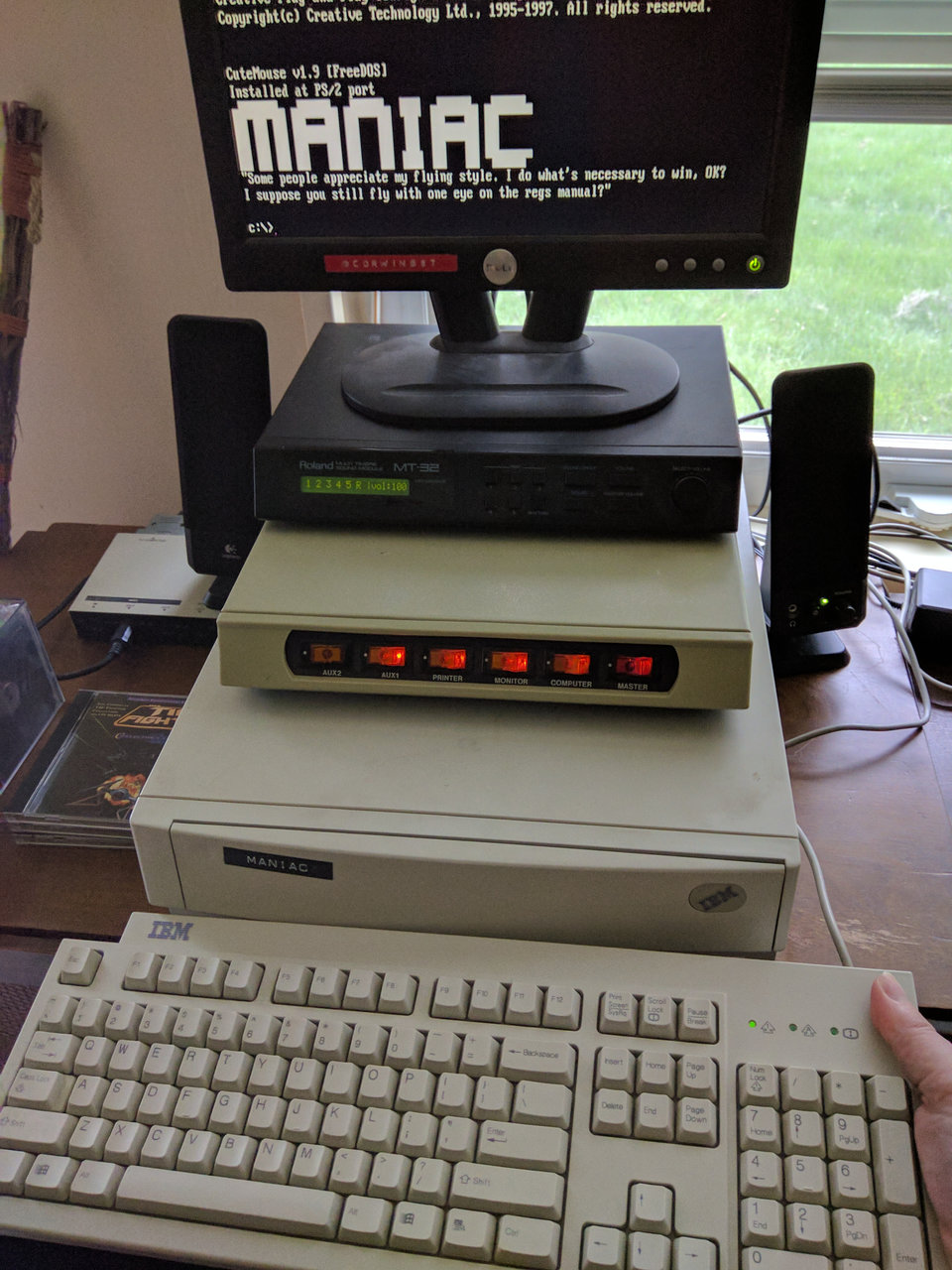 About the name: Major Todd "Maniac" Marshall is from Origin's PC game series, Wing Commander, eventually played in live-action by Tom Wilson.
About the name: Major Todd "Maniac" Marshall is from Origin's PC game series, Wing Commander, eventually played in live-action by Tom Wilson.
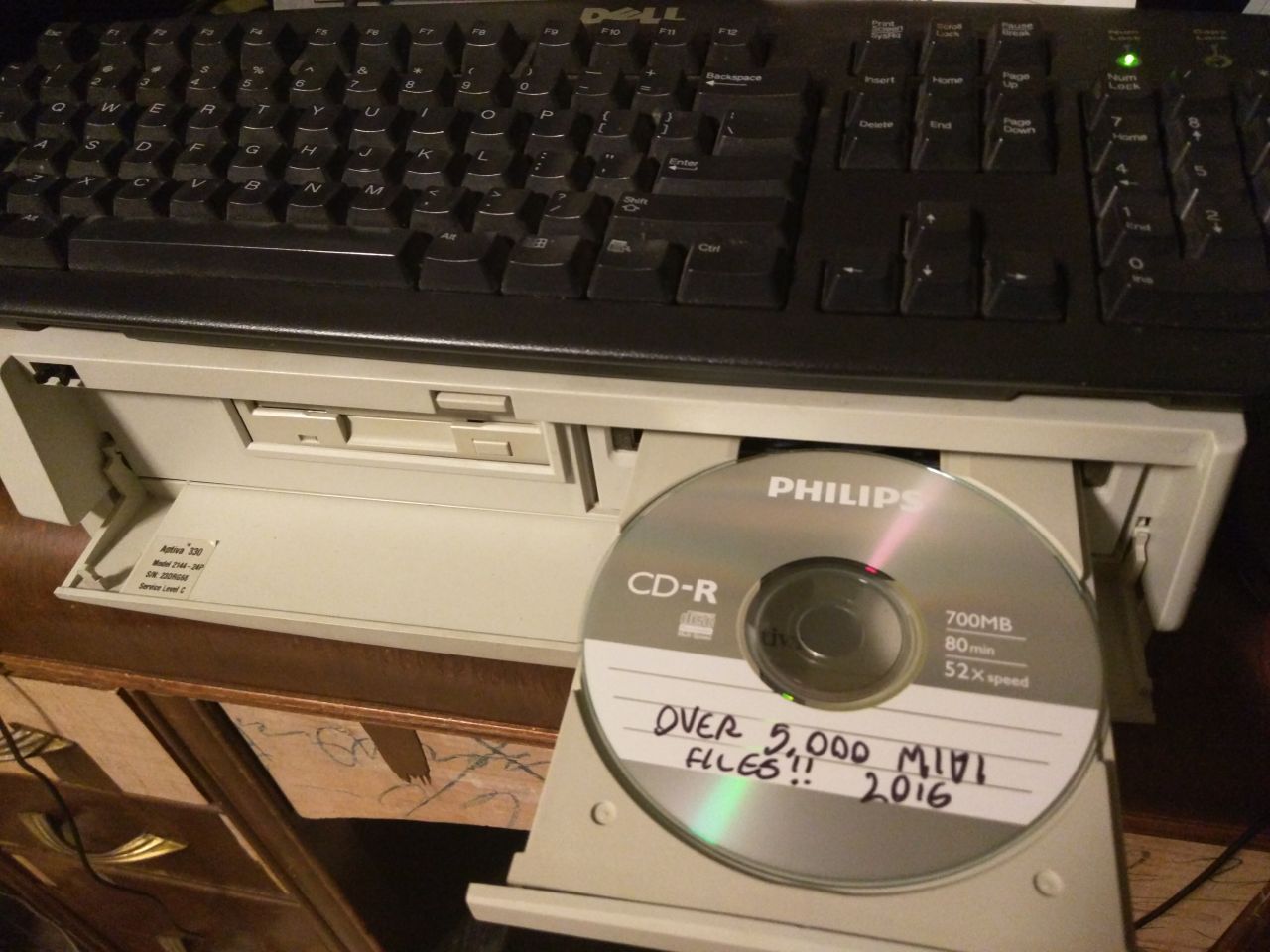
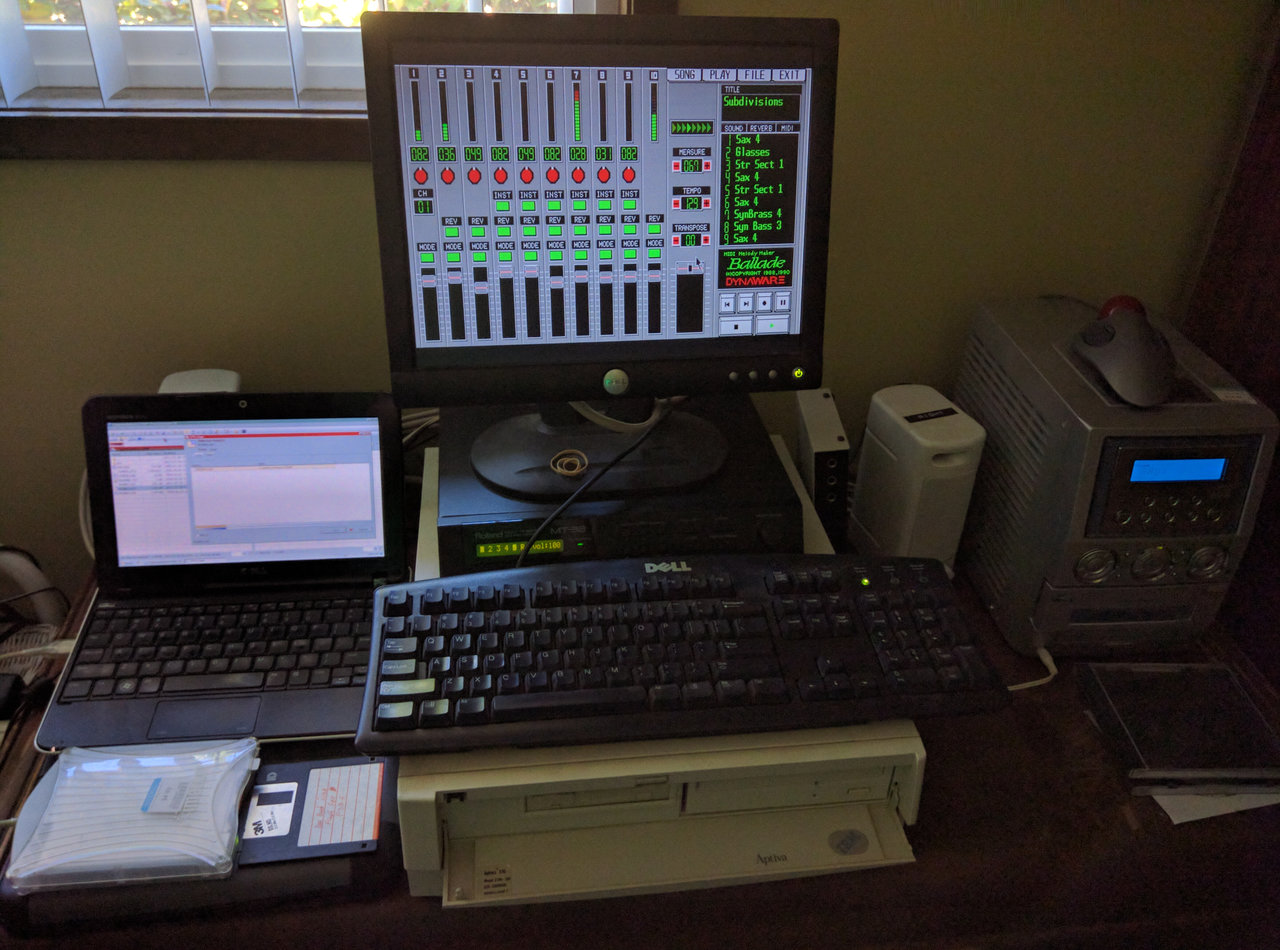
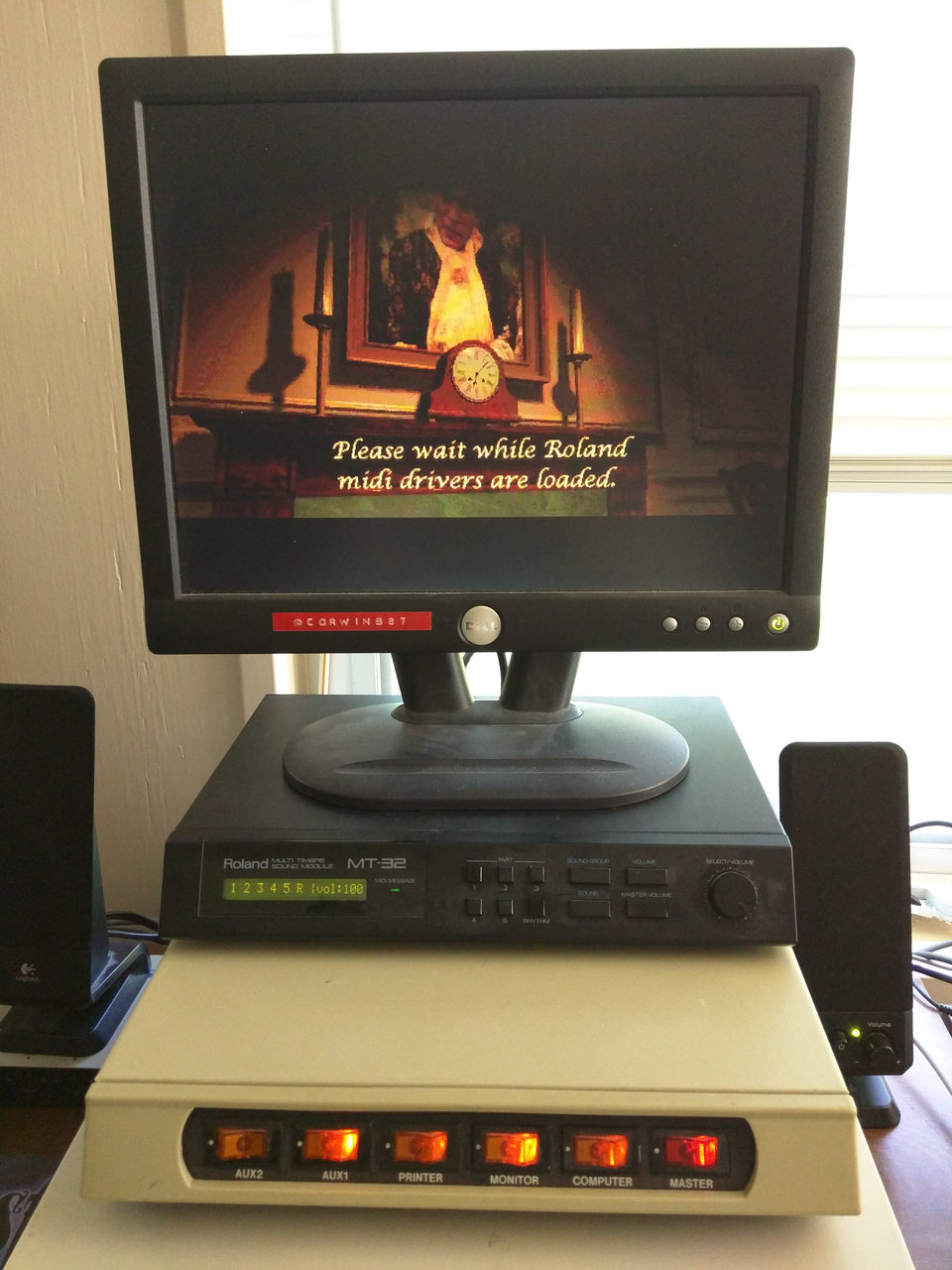
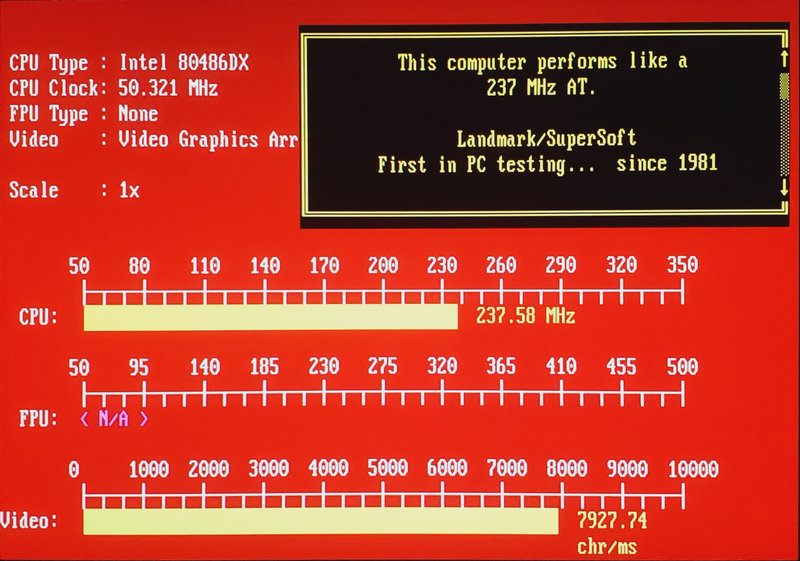
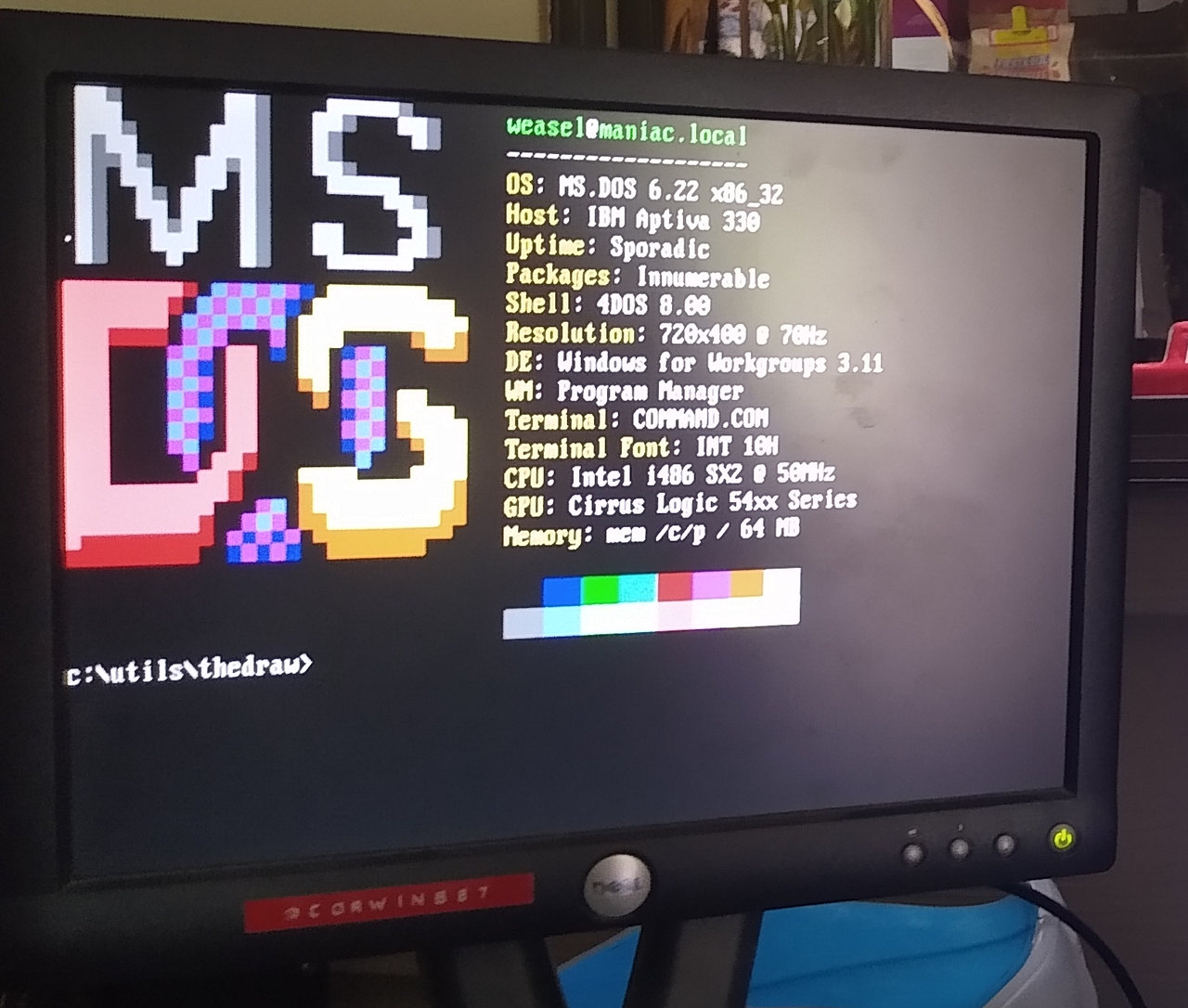 Neofetch for DOS wasn't really a thing when I took this picture - that's just an ANSI picture made in TheDRAW. ;)
Neofetch for DOS wasn't really a thing when I took this picture - that's just an ANSI picture made in TheDRAW. ;)
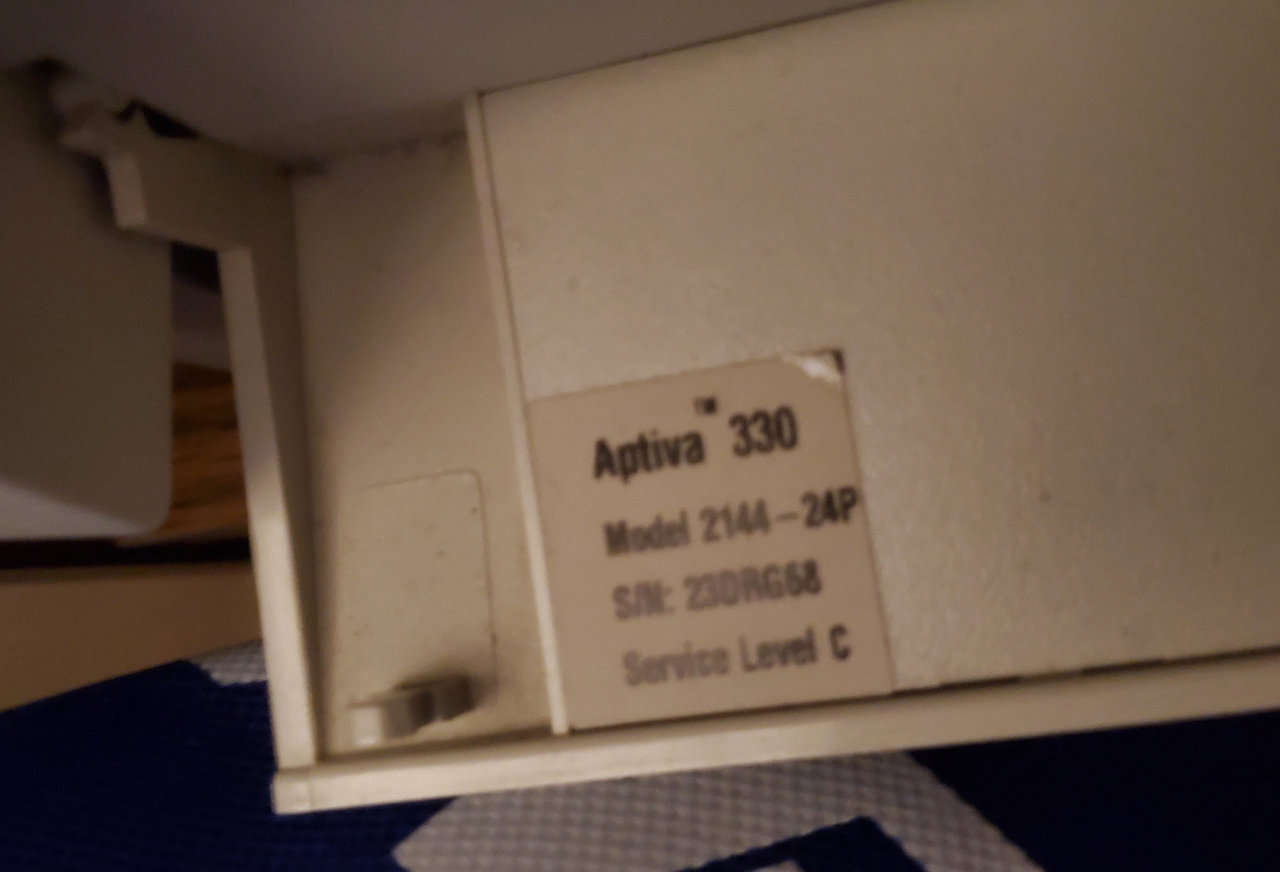
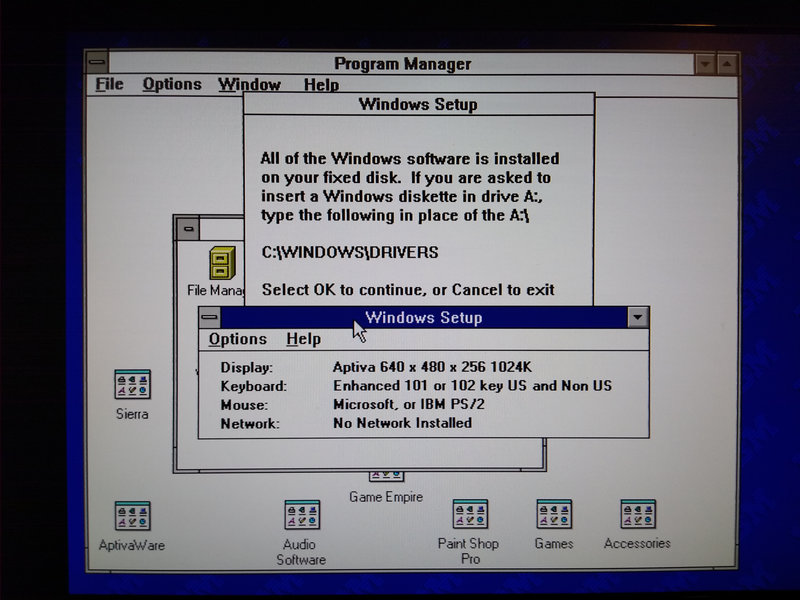
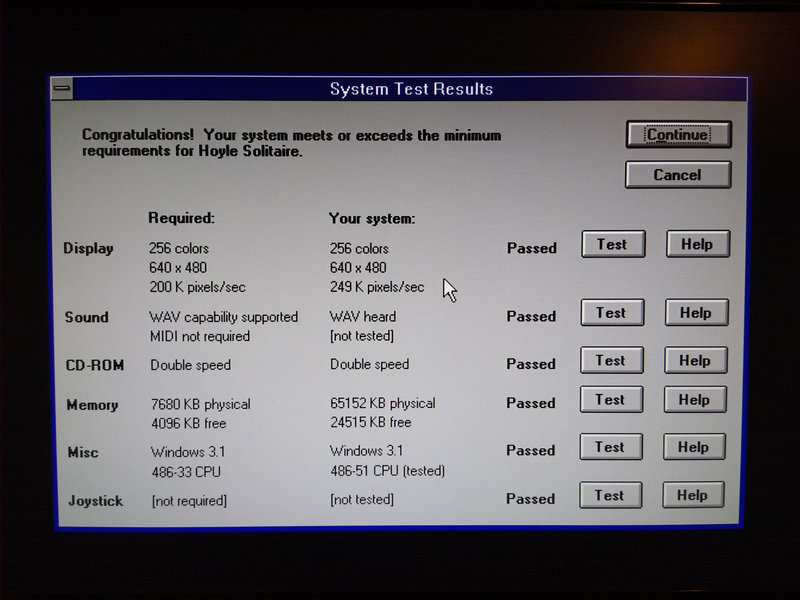
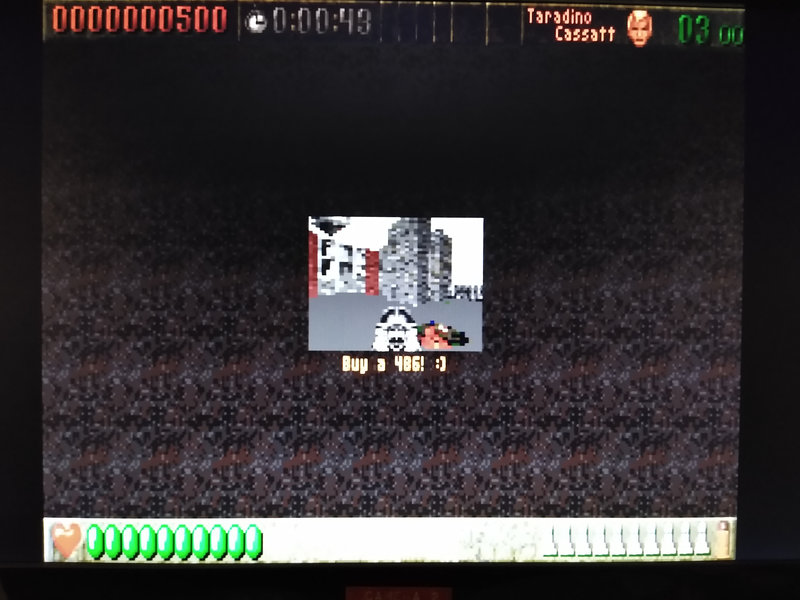
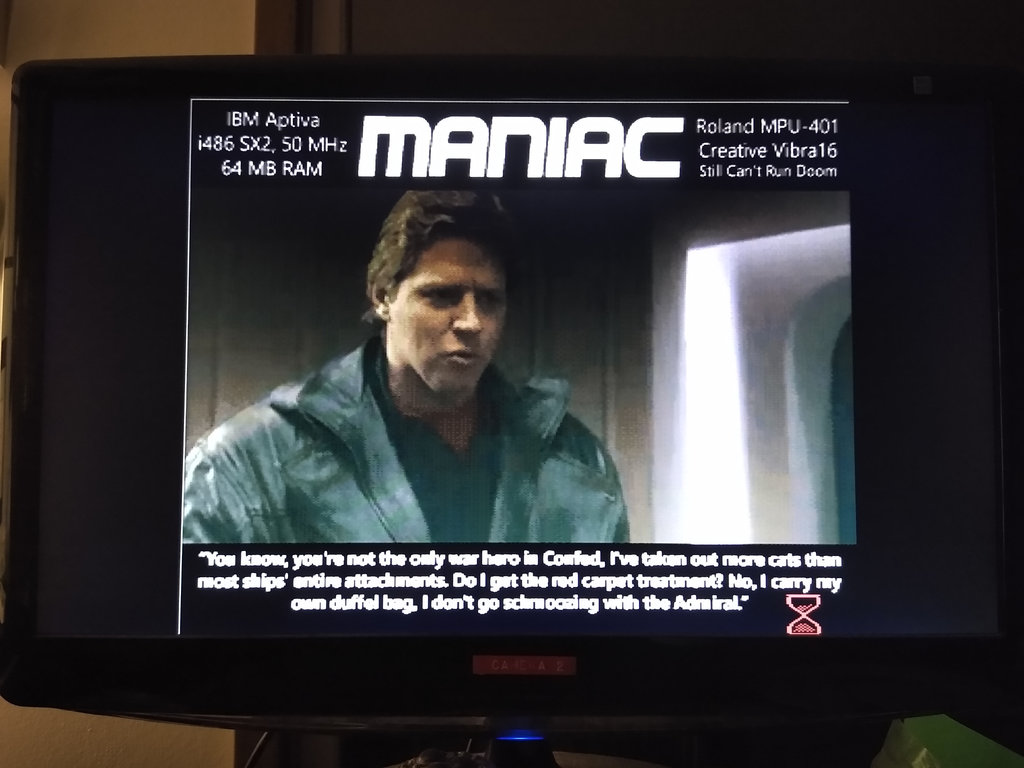 I've attempted to capture Maniac's essence by including quotes from him in the boot sequence. It briefly ran Windows 95. That was not a good fit for it.
I've attempted to capture Maniac's essence by including quotes from him in the boot sequence. It briefly ran Windows 95. That was not a good fit for it.
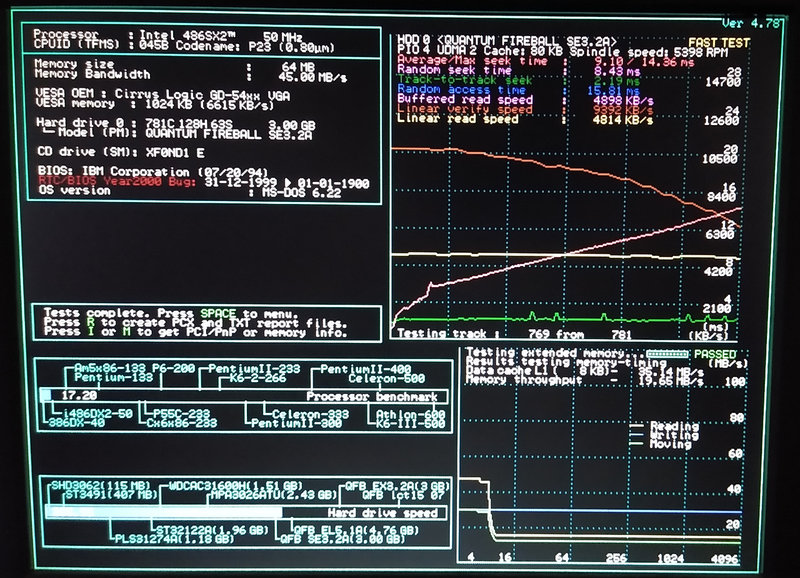
Inherited from an old co-worker of Mom's that once ran a second-hand fashion store just outside the Portland metro area, Maniac came to us with no sound hardware, barely any RAM, and a desire for Greater Things. Once cleansed of its factory IBM hard drive and ISA internal modem card, Dad had installed a Roland interface card to work with his old MPU-401 and MT-32. Once de-mothballed by myself, I granted it a larger hard drive, a Sound Blaster Vibra-16, and the largest stick of memory with which it was compatible (coincidentally, the largest the motherboard would accept as well). Some parts of the unit had to be borrowed for another computer, but it'll still start right back up whenever I ask. With mTCP installed, it'll even surf the web, chat on IRC, or send and receive files to my other, much newer computers (and phone!) via FTP.
Its lack of L1 cache (and apparent inability to be given any?) does prevent it from tackling anything more complex; games like Rise of the Triad and Doom prove to be simply too much for the poor thing, and Quake refuses to start on it at all, simply rebooting the computer instead if I try.
Lifthrasir
- Base model: Toshiba Satellite 315CDS, c.1997
- Processor: Pentium MMX, 200 MHz
- Memory: 32 MB
- Video: Chips & Technologies 65555, outputting to 800x600 passive-matrix panel
- Audio: Yamaha OPL3-SAx
- Storage: ? GB hard disk drive, built-in CD-ROM and 3.5" floppy drive
- Networking: Only via PCMCIA cards; OS does support 802.11g WLAN card.
- Peripherals: Needs a PS/2 mouse due to trackpoint nub not working. Dual PCMCIA slots.
- Operating system: Windows 98 Second Edition
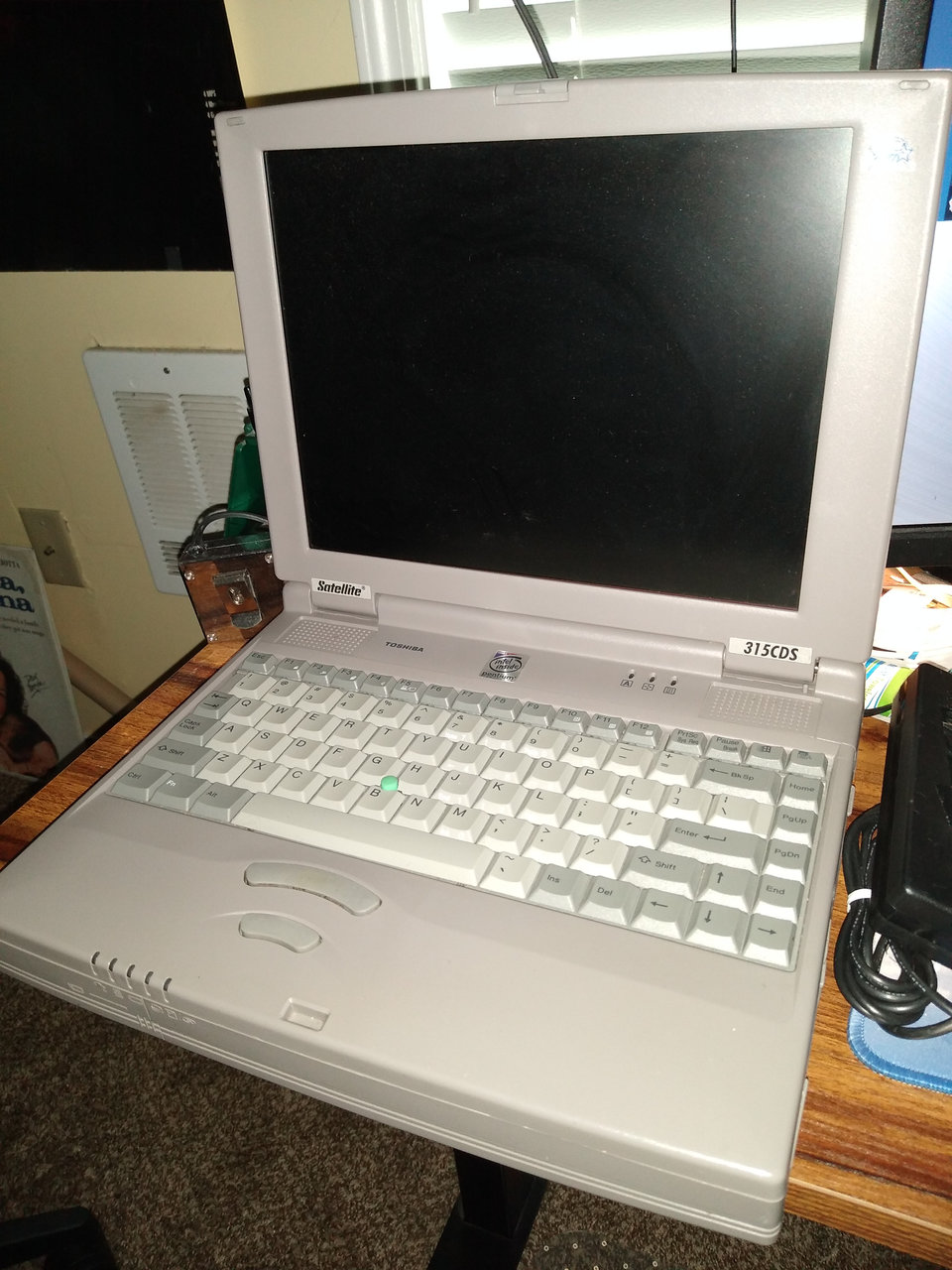 About the name: Lifthrasir, the wife of Lif, was one of two humans who were said to have survived the events of Ragnarok, and afterwards set forth to repopulate the world.
About the name: Lifthrasir, the wife of Lif, was one of two humans who were said to have survived the events of Ragnarok, and afterwards set forth to repopulate the world.
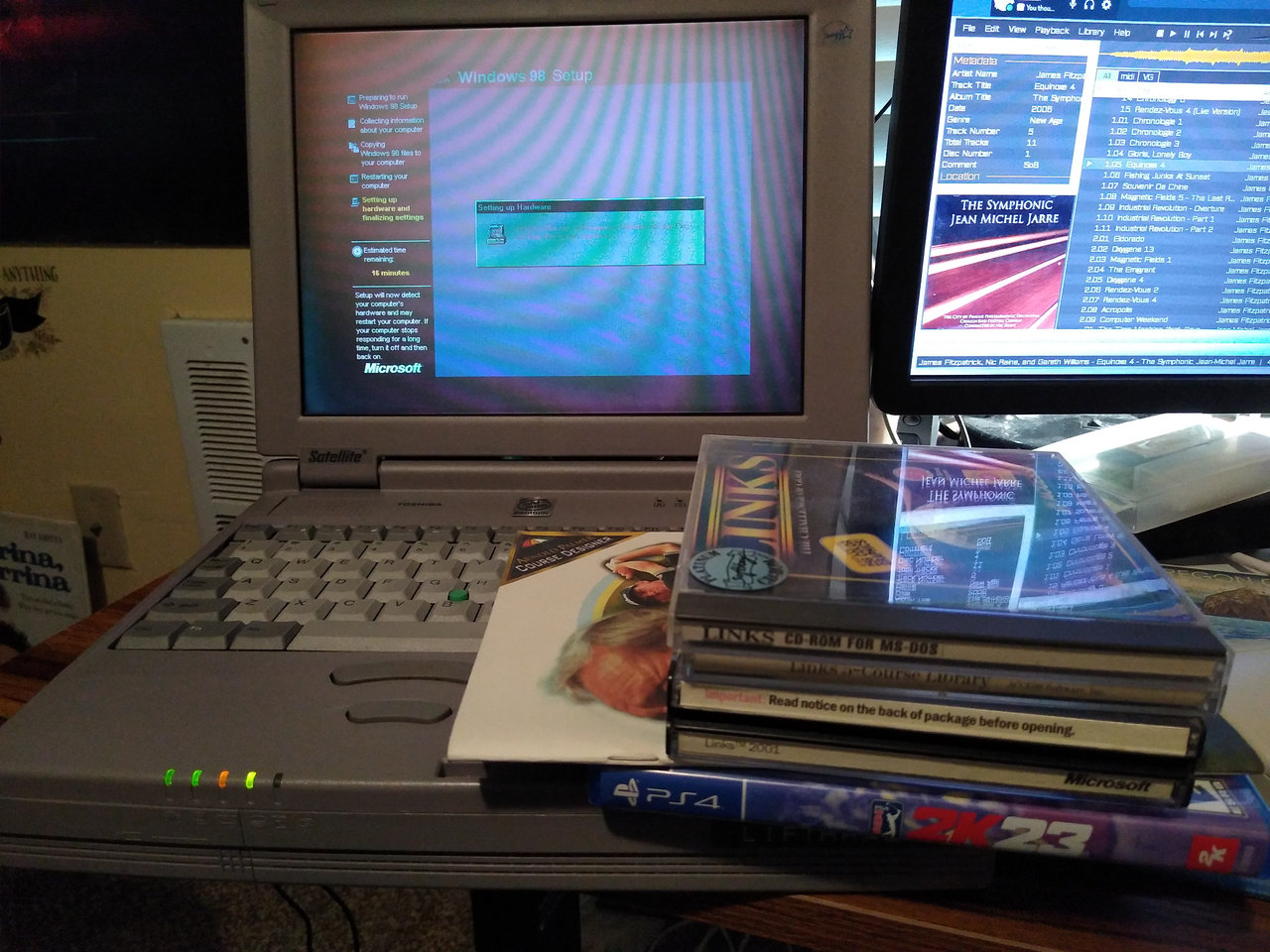
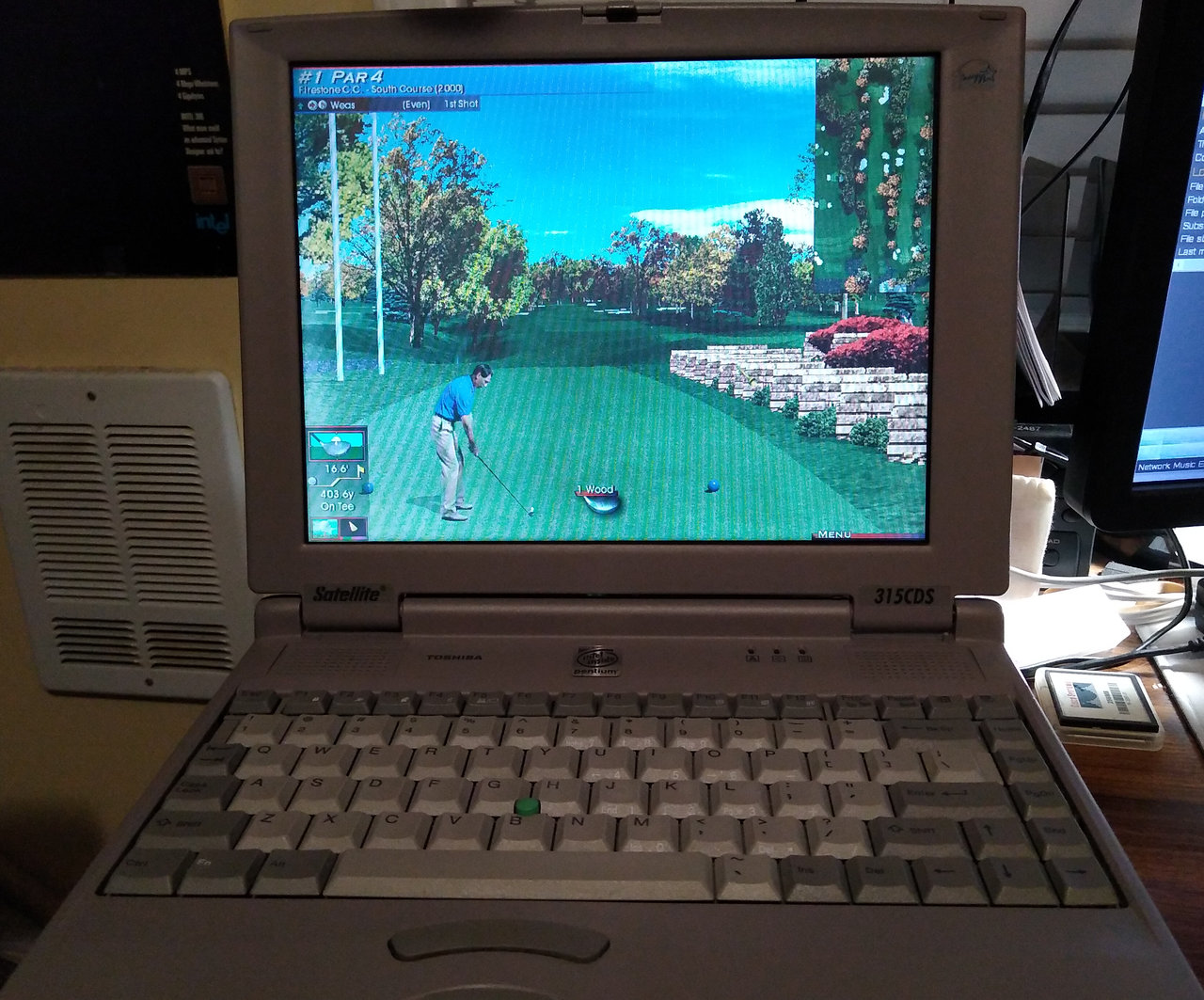
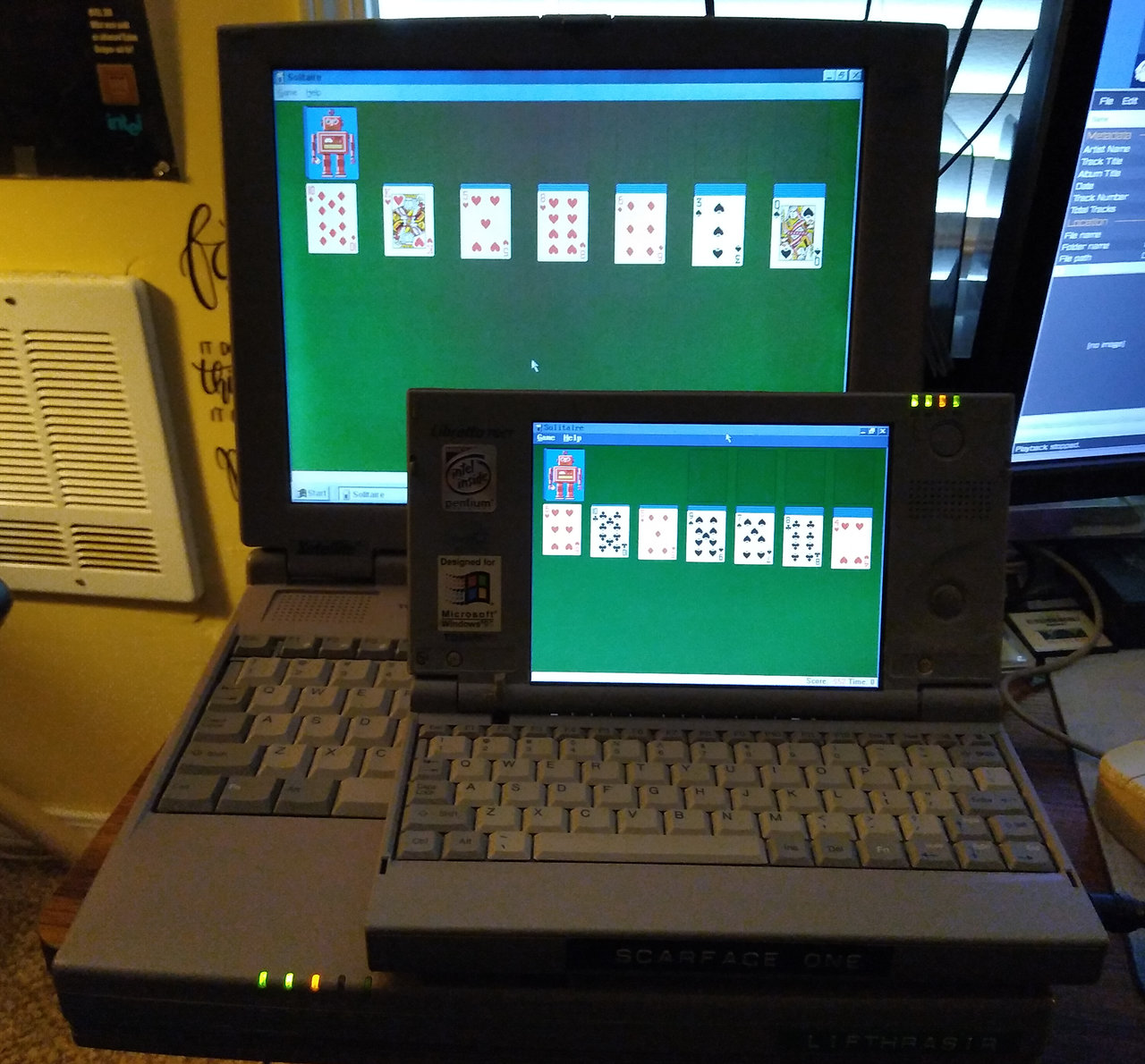
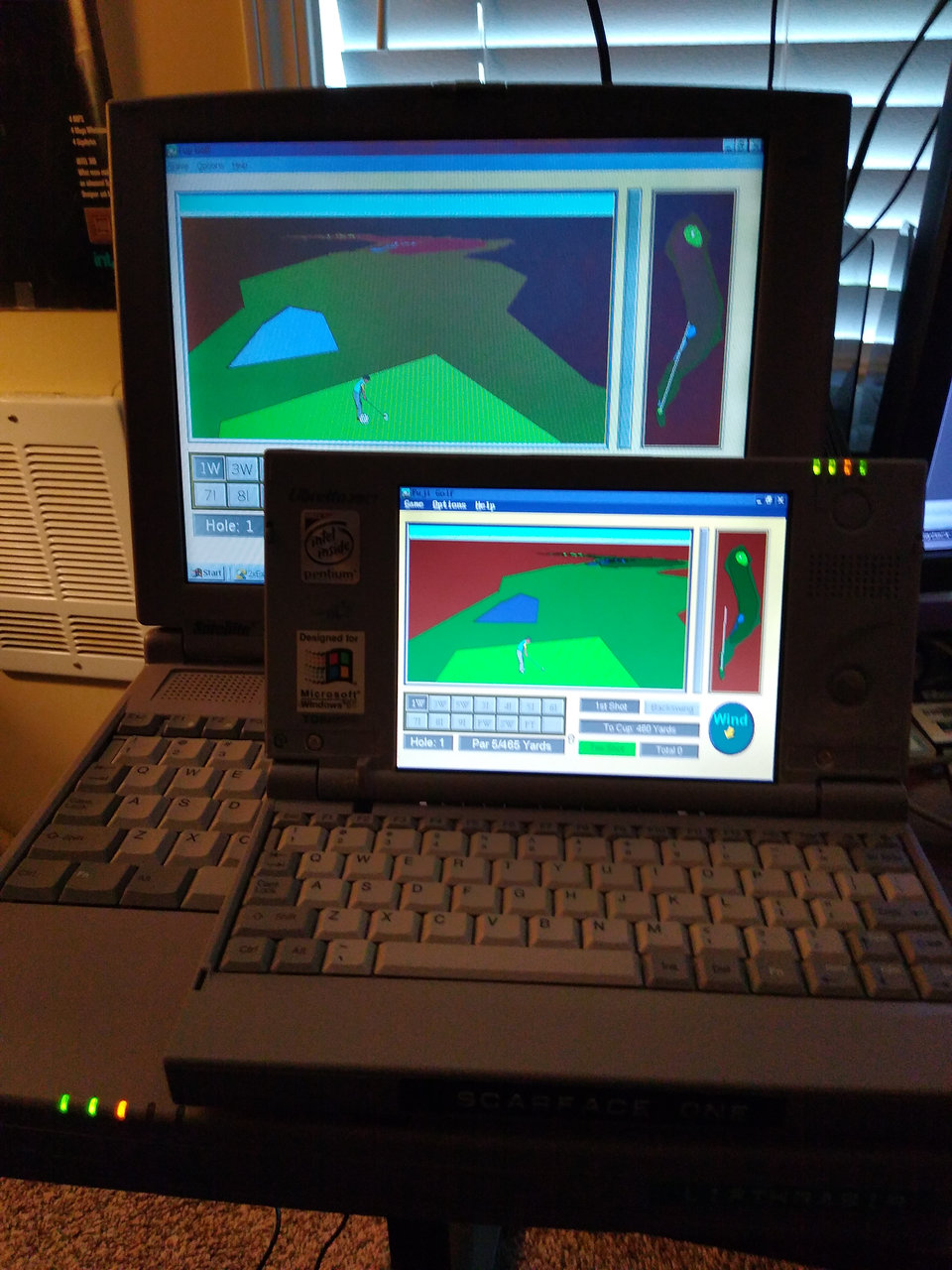
This machine came to me in mostly reasonable condition, but with a hard drive from a different computer installed in it; as such, it was running an OS completely unsuited to it (Windows 2000, I believe) and non-functioning drivers. With some effort, I was able to erase it and get Windows 98SE to work on it. I have very little of the Toshiba-specific software installed. I've successfully used Lifthrasir to image floppy disks, as well as a few CDs, though its scant hard drive capacity makes the latter slightly difficult. Also, since this is a model that still has a passive-matrix screen, fast action games are decidedly not recommended for this guy. Fortunately, there are plenty that still work just fine.
Sigurd
- Base model: Panasonic Toughbook CF-27 (Mk.1), c.1997
- Processor: Pentium MMX, 266 MHz
- Memory: 159 MB, as reported by BIOS
- Video: NeoMagic MagicGraph 128XV, outputting to 800x600 panel
- Audio: Yamaha OPL3-SAx
- Storage: 16 GB CompactFlash card via internal IDE adapter
- Networking: Only via PCMCIA cards; OS does support 802.11g WLAN card.
- Peripherals: Trackpad, rubber keyboard, dual PCMCIA slots, single USB port, storage bay can be swapped between floppy drive and DVD-ROM. Strangely does not like to read DVDs.
- Operating system: At last recollection, Windows 98 Second Edition
- About the name: Among the most well known heroes of the old Norse sagas, Sigurd was the slayer of the dragon Fafnir.
Bought at a hefty discount from what I can only assume was a fundraising auction for a county sheriff's department; alas, it came with most of its components removed. I was able to replace the hard drive caddy, acquire two modules for the swappable external storage bay, and get a new power brick for it. I also took the extra step of getting it an IDE to CompactFlash adapter, eliminating just about every moving part the machine ever had. Given its origins, the very first thing I elected to do with it was install and play Grand Theft Auto, which ran well enough, and controlled quite awfully on the weather-resistant rubber keyboard. I am rather surprised that the trackpad still works.
Scarface One
- Base model: Toshiba Libretto 70ct, c.1997
- Processor: Pentium MMX, 120 MHz
- Memory: 32 MB
- Video: Chips & Technologies 65550, outputting to 640x480 panel
- Audio: Yamaha OPL3-SAx
- Storage: 4 GB CompactFlash card on internal adapter, split into two partitions
- Networking: Accepts PCMCIA ethernet card but not the WLAN one
- Peripherals: I don't have the Toshiba port-replicator so most I/O is inaccessible to me
- Operating system: Windows 95 OSR2
- About the name: I adopted Scarface One from a previous owner who, like me, also has a penchant for naming their computers. In keeping with maritime tradition, one does not rename a vessel. The previous owner had attempted to clean up around the built-in trackpoint nub using a solution of acetone, which did slightly damage the plastics; thus, the name.
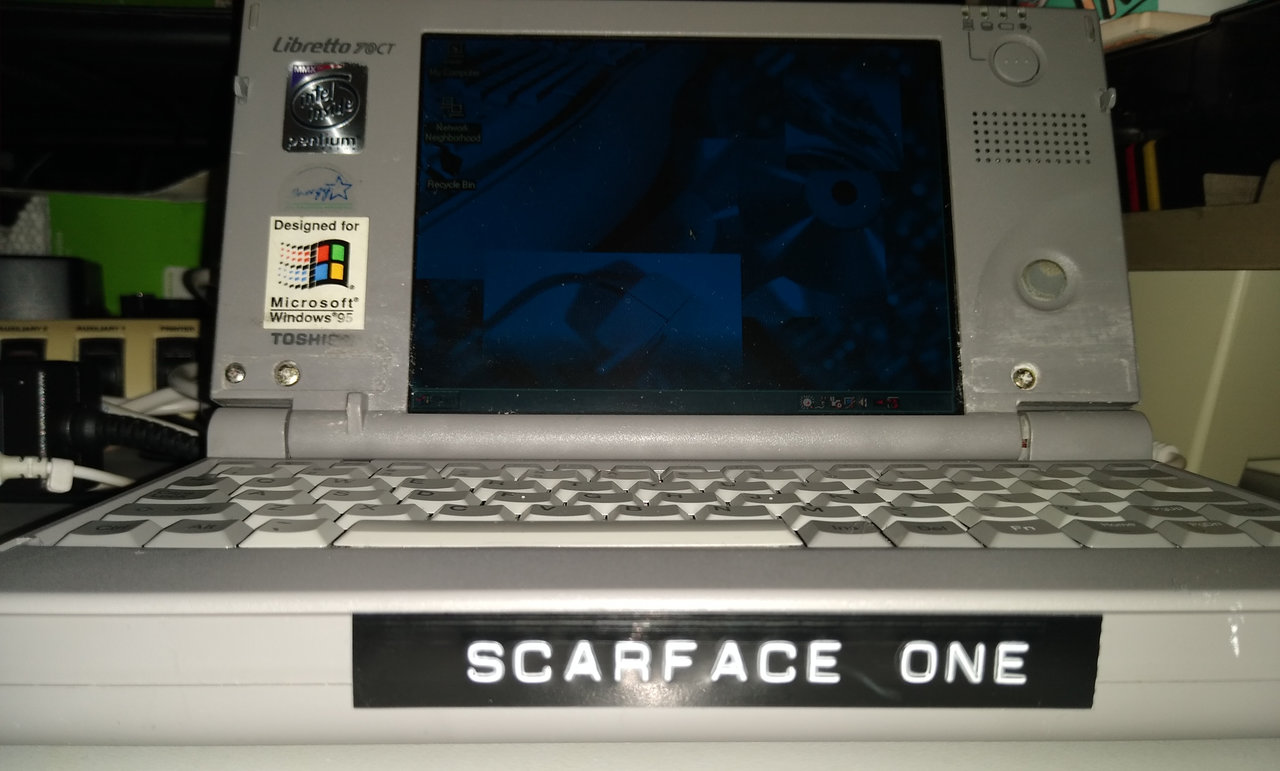 The acetone damage and customary name tag are pretty well visible in this picture.
The acetone damage and customary name tag are pretty well visible in this picture.
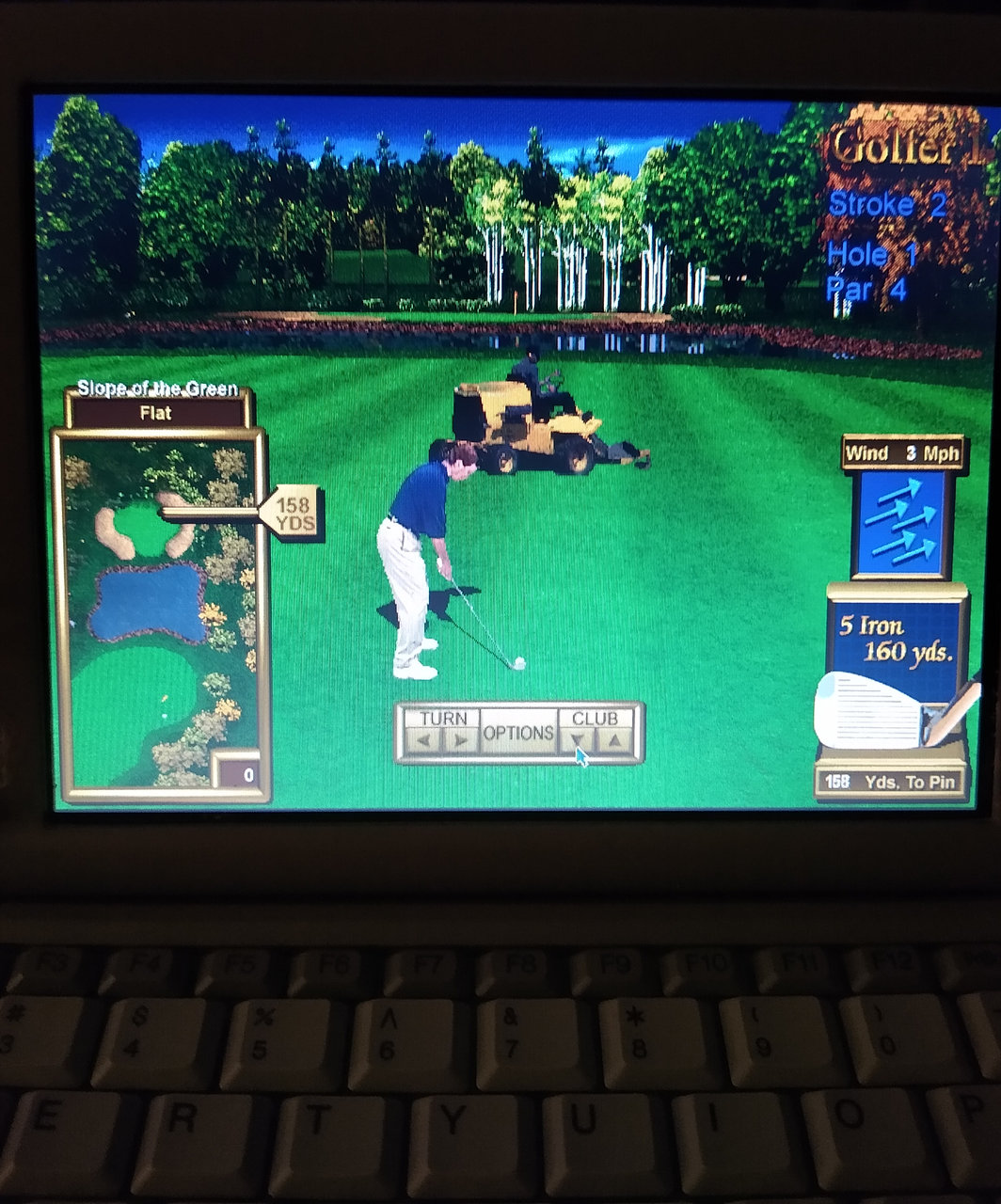
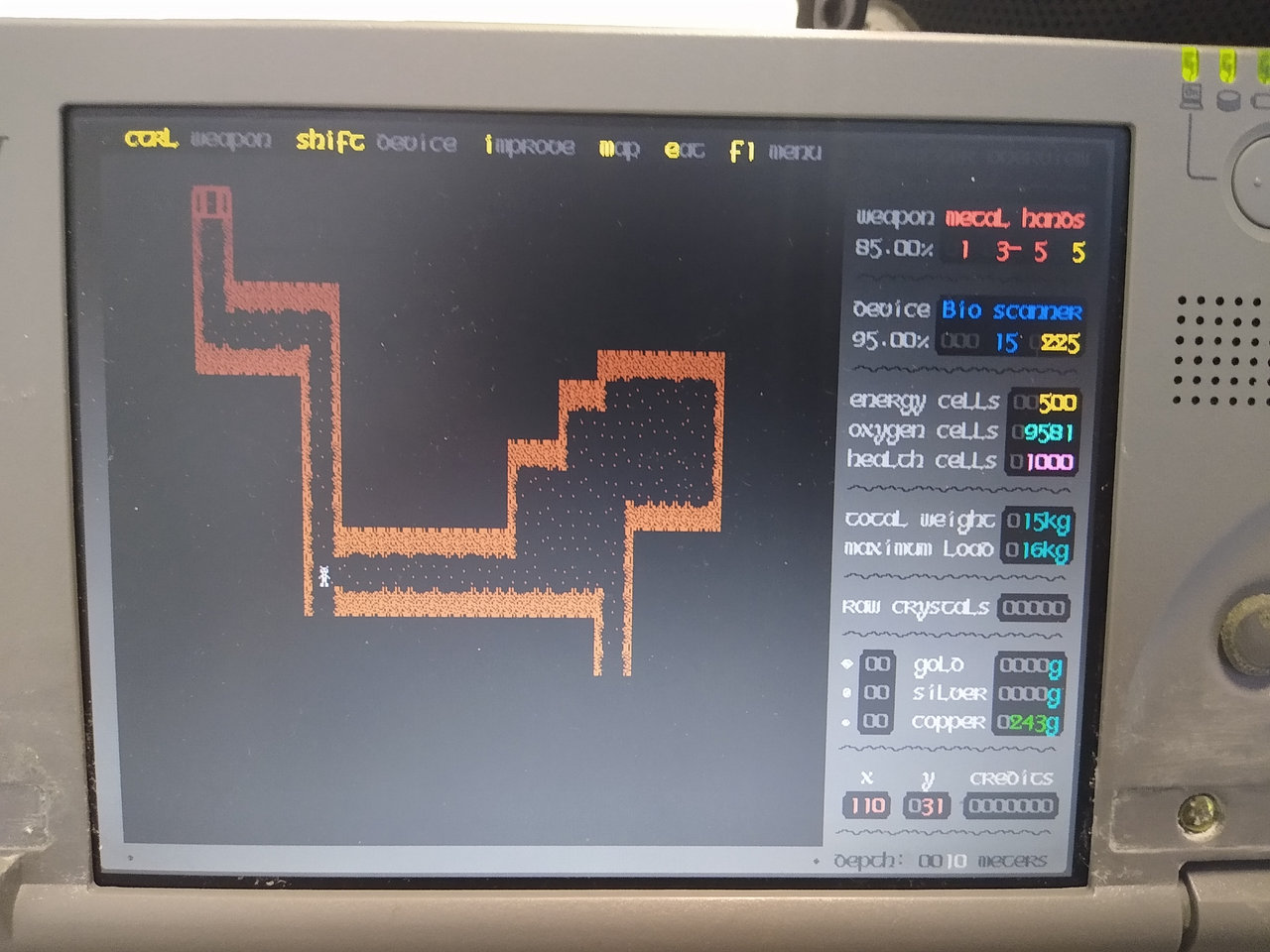 Reaping the Dungeon, by Ron Heuse, a fascinating little sci-fi Roguelike, demonstrates the Libretto's unusual stretched text mode.
Reaping the Dungeon, by Ron Heuse, a fascinating little sci-fi Roguelike, demonstrates the Libretto's unusual stretched text mode.
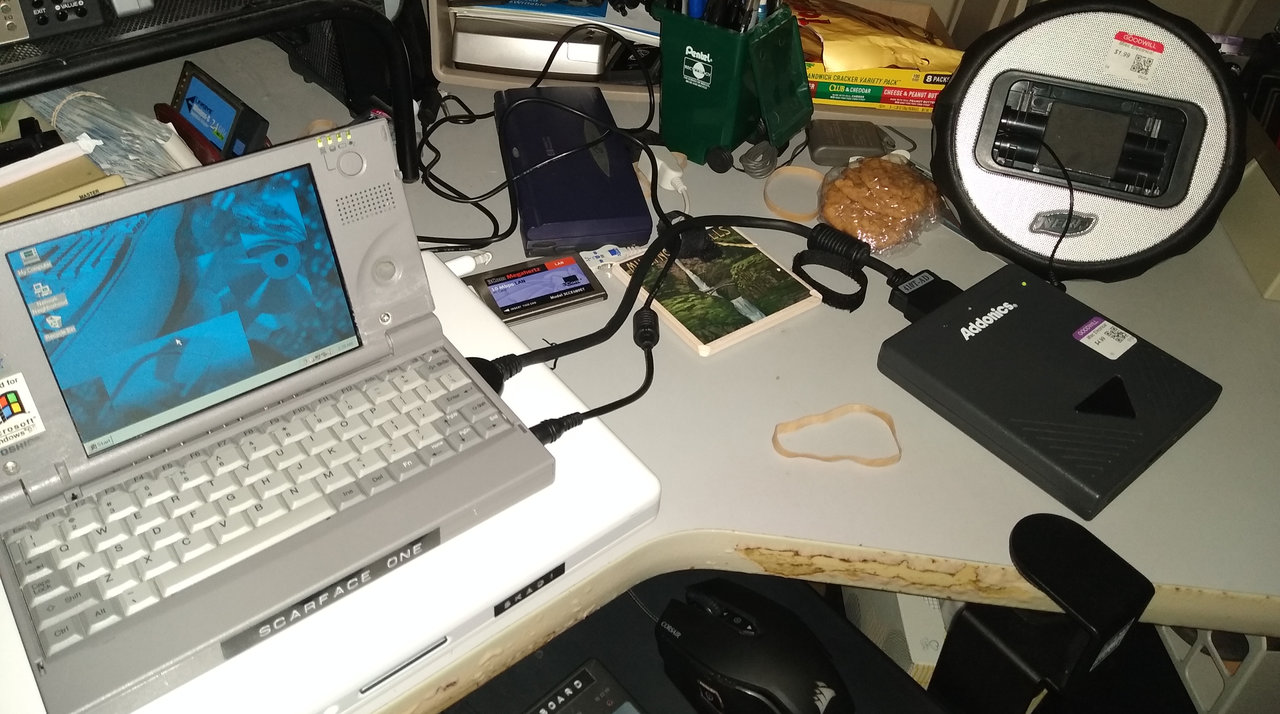
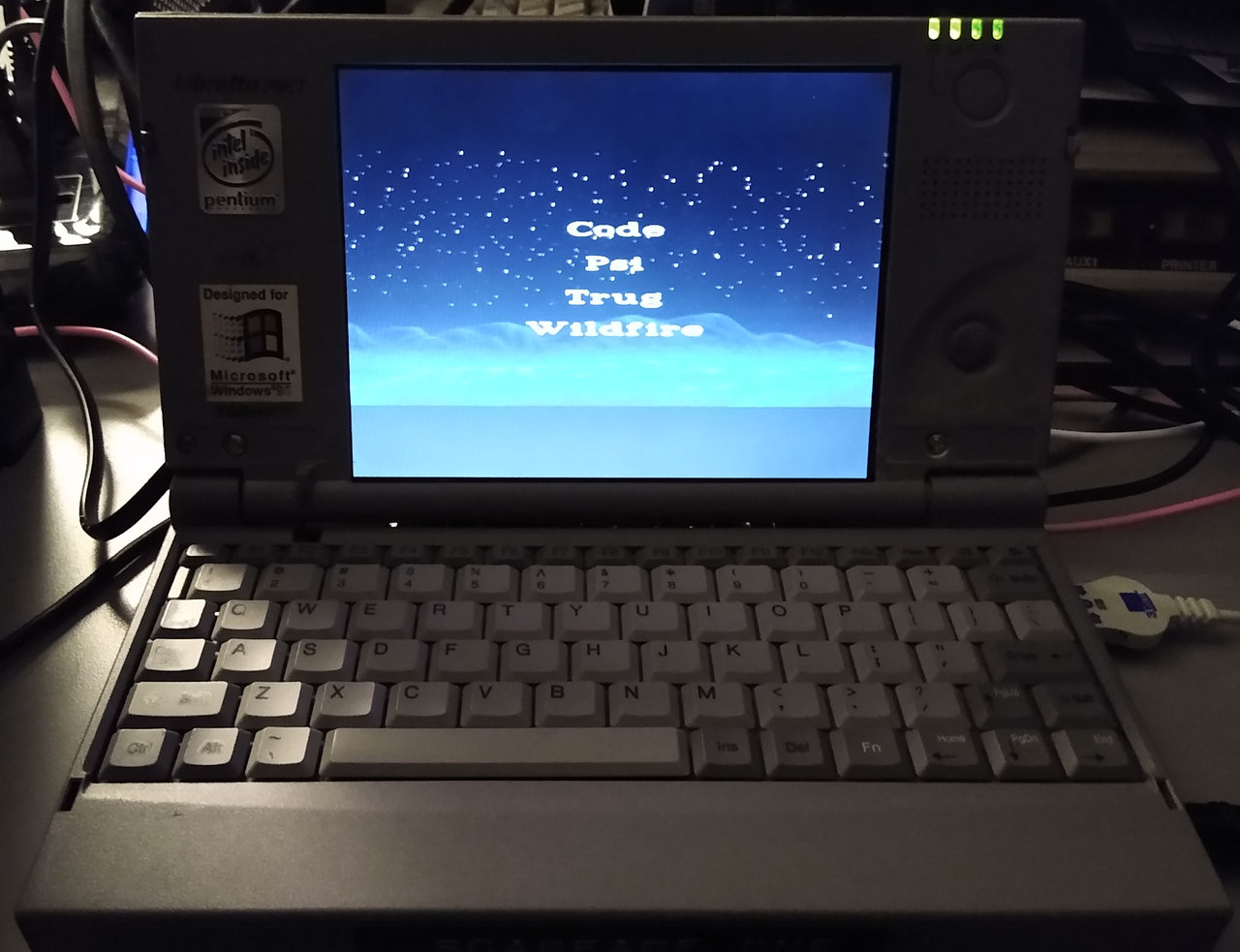
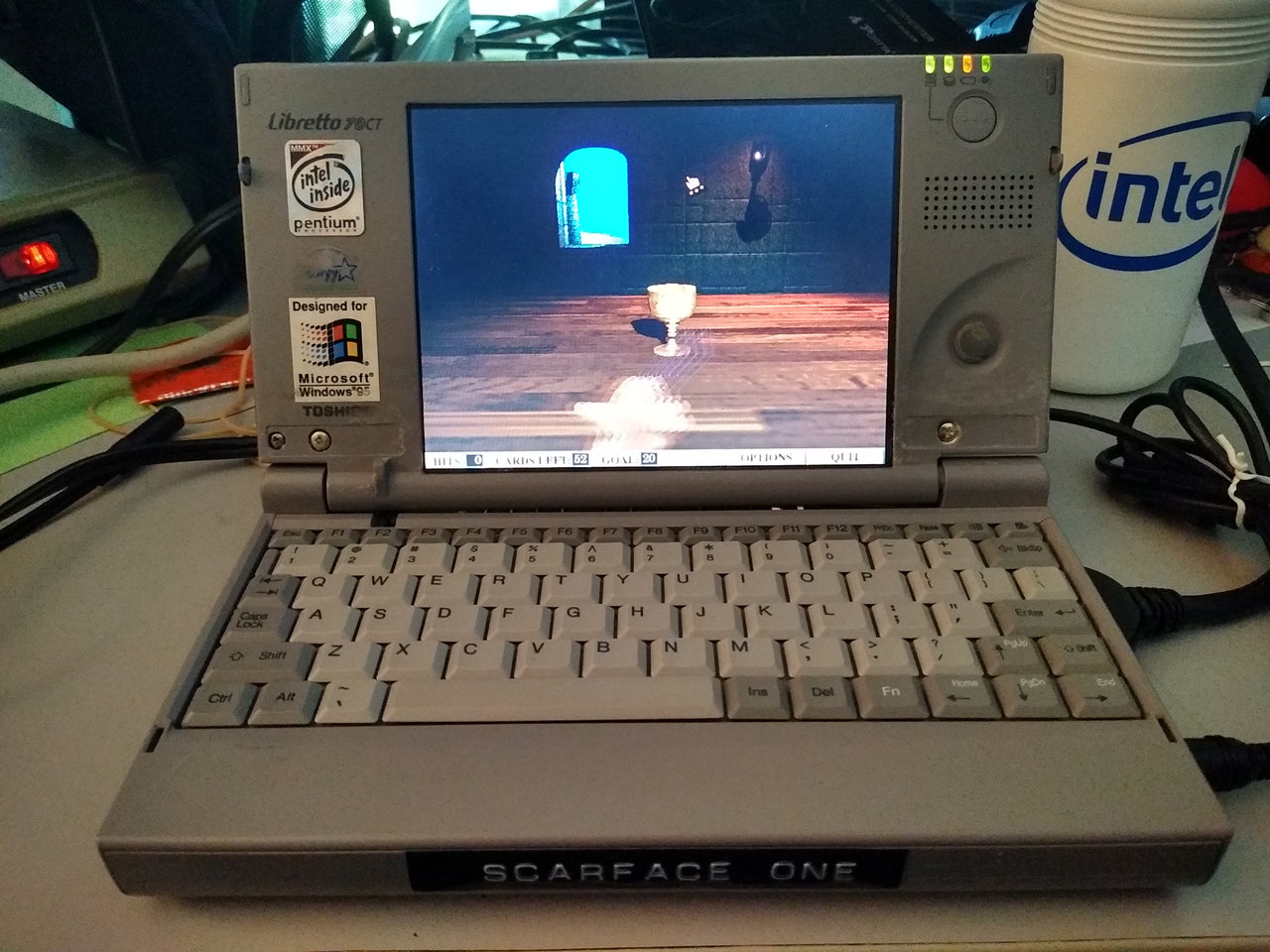
Eitr
- Base model: Tyan Computing S1692 ATX motherboard
- Processor: Pentium 2, Slot-1, 233 MHz
- Memory: 64 MB
- Video: ?, 3Dfx Voodoo 2
- Audio: Sound Blaster Vibra-16
- Storage: CompactFlash adapter, 80 GB IDE hard disk drive, CD-ROM drive
- Networking: D-Link DFE-530TX PCI ethernet card
- Peripherals: GamePort joystick
- Operating system: Swappable, but commonly Windows 98 Second Edition
- About the name: Eitr is attested as a toxic substance that is said to be the origin of all living things.
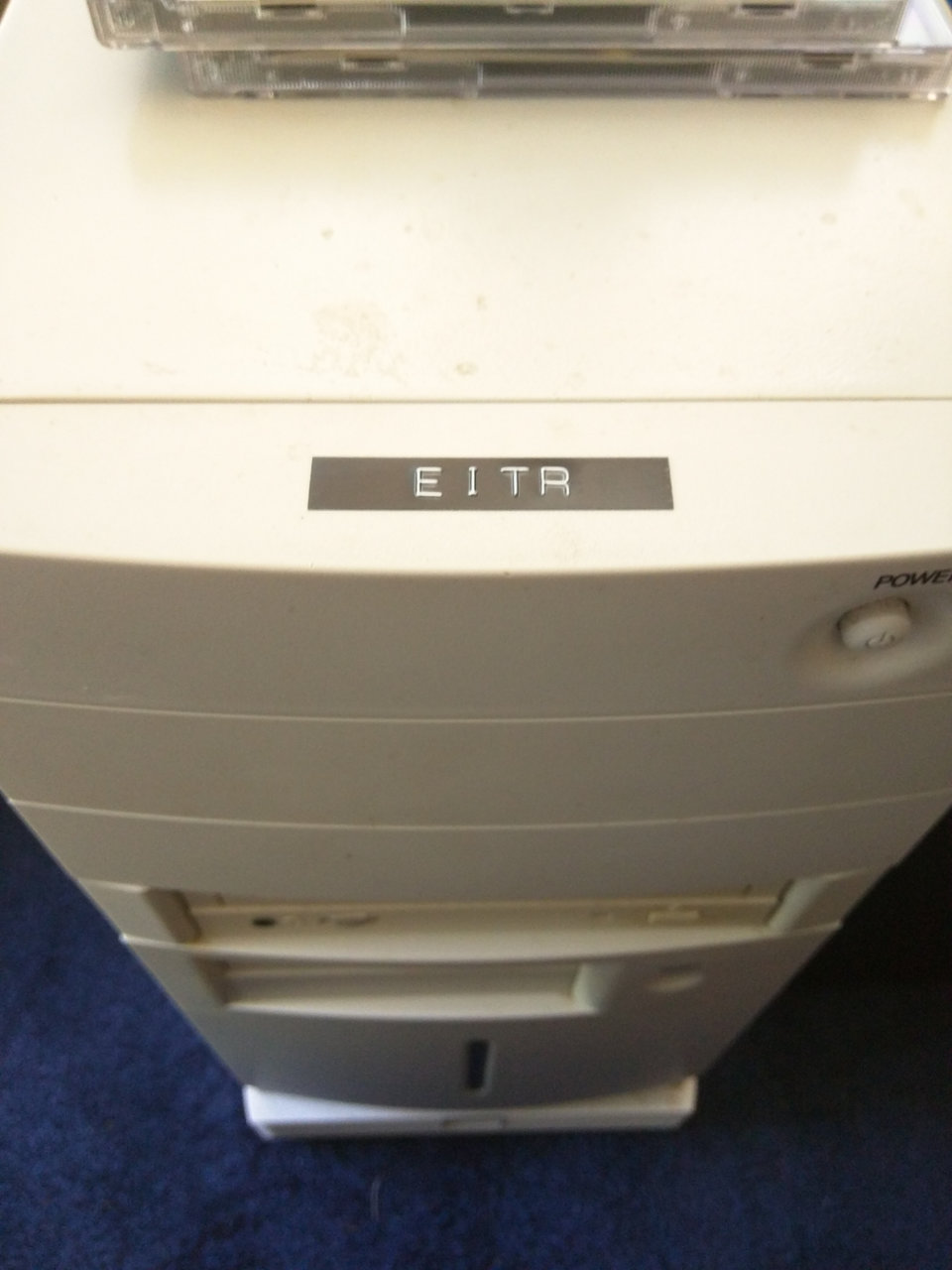
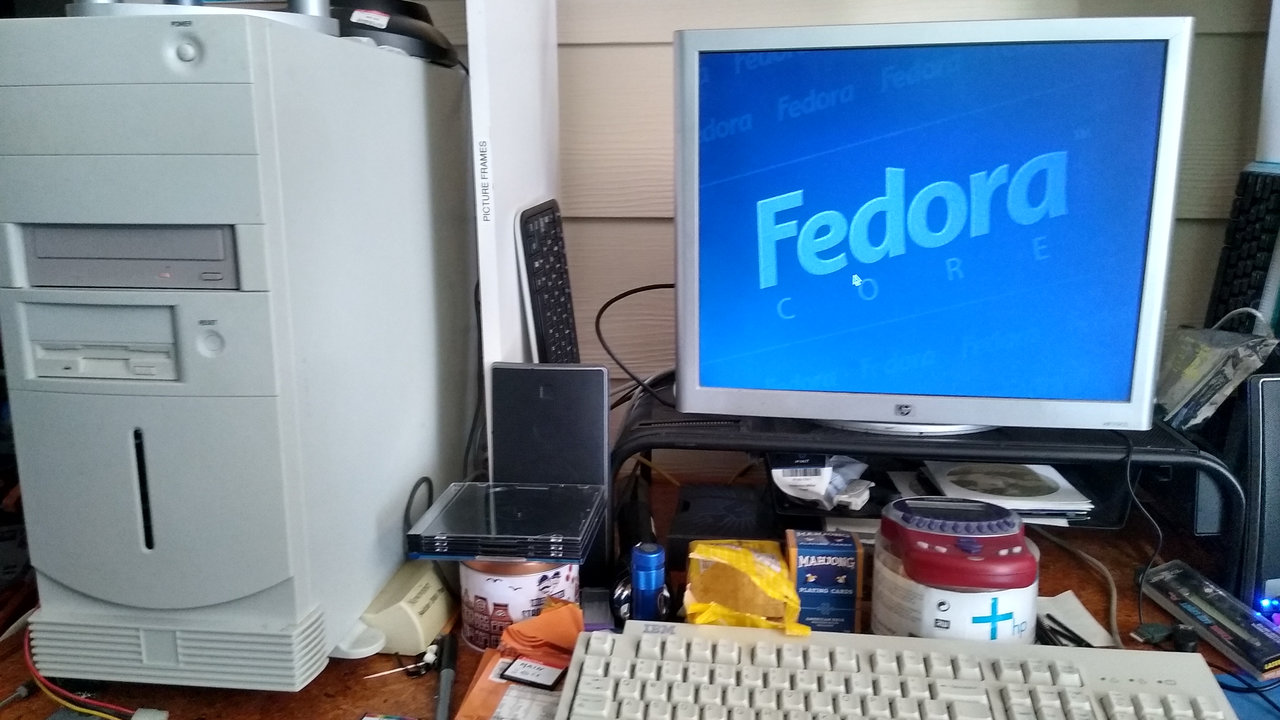
I got this one from Craigslist as a fully-specced, DOS-only computer, but quickly set about improving it with parts found lying around the house. It is now quite adept at running anything up to 1997, which handily accounts for most Windows 9x games that require a 3Dfx video card (in this case, my childhood Creative 3D Blaster Voodoo 2). It's been through a lot, but it's a damned solid machine at this point. Assuming it doesn't throw too many BSODs at you. But that was a fact of life, in '97.